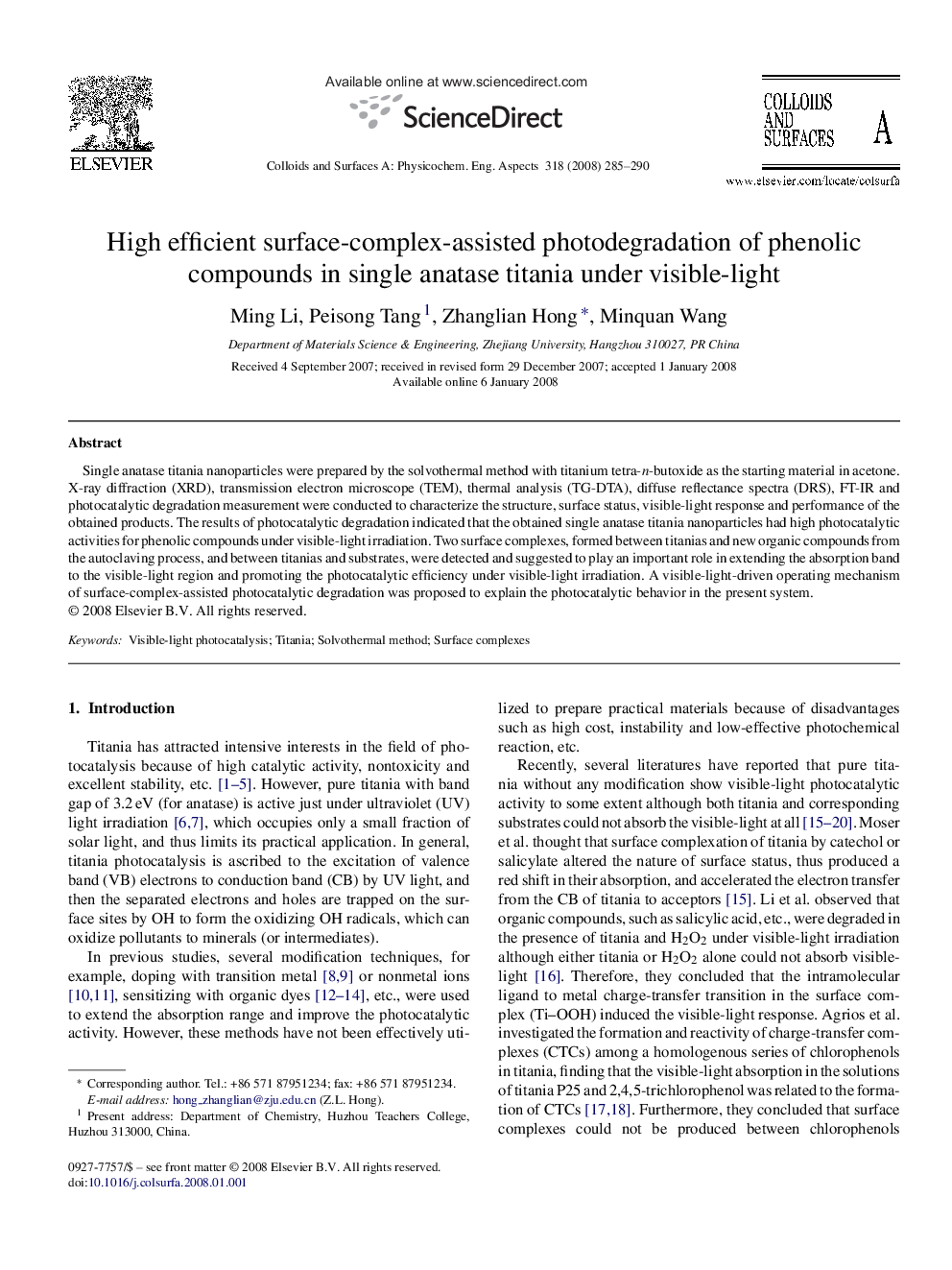| Article ID | Journal | Published Year | Pages | File Type |
|---|---|---|---|---|
| 597095 | Colloids and Surfaces A: Physicochemical and Engineering Aspects | 2008 | 6 Pages |
Single anatase titania nanoparticles were prepared by the solvothermal method with titanium tetra-n-butoxide as the starting material in acetone. X-ray diffraction (XRD), transmission electron microscope (TEM), thermal analysis (TG-DTA), diffuse reflectance spectra (DRS), FT-IR and photocatalytic degradation measurement were conducted to characterize the structure, surface status, visible-light response and performance of the obtained products. The results of photocatalytic degradation indicated that the obtained single anatase titania nanoparticles had high photocatalytic activities for phenolic compounds under visible-light irradiation. Two surface complexes, formed between titanias and new organic compounds from the autoclaving process, and between titanias and substrates, were detected and suggested to play an important role in extending the absorption band to the visible-light region and promoting the photocatalytic efficiency under visible-light irradiation. A visible-light-driven operating mechanism of surface-complex-assisted photocatalytic degradation was proposed to explain the photocatalytic behavior in the present system.
